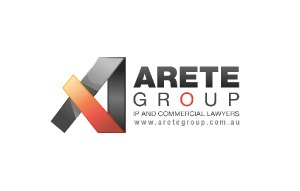
One of my old running mates recently posted a photo on Facebook of a sign which listed prohibited conduct in a recreation reserve: ” jogging is prohibited”. I posted a suggestion that if he was charged, the logical defence would be “but, your honour, I was not jogging. I was running. There is a difference. Not guilty as charged”.
My suggestion in differentiating between jogging and running was intended as a joke, but it also got me thinking. The law really is quite often a matter of dealing with what most people would consider semantics.
Let’s consider semantics in trade mark law. Semantics are alive and well when responding to an Adverse Report issued by a Trade Mark Examiner. Below is a couple of hypothetical examples.
Section 41 of the Australian Trade Marks Act 1995 (Cth) (the Act) broadly provides that a trade mark cannot describe the goods / services for which monopoly rights are sought. A good example is that you can of course have a trade mark for APPLE in relation to electronic computing and music products, however a single trader could not have monopoly rights for APPLE in relation to the sale and promotion of apples or products primarily comprised of apples. So far so good, but what about if someone applied for a trade mark application for APPLE in respect of vegetables?
If a Trade Mark Examiner raised an Adverse Report in this hypothetical example, there would be room to argue that the mark APPLE does not describe or allude to vegetables. Taking it one step further, there would be room to argue to the Examiner that the examination process didn’t compares apples with apples, unless the Examiner was referring to tomatoes, which are sometimes known as love apples. But then of course you could argue that a tomato is scientifically a fruit.
Semantics – but also an argument that may just be sufficiently sustainable to overcome the objections raised by the Examiner and allow the application to be accepted. Section 44 of the Act broadly provides that a trade mark application must be refused if it is substantially identical or deceptively similar to an earlier filed mark and in relation to the same, similar or closely related goods or services.
Taking our jogging v running example, if someone applied for a trade mark for JOGGING COACH for jogging programs (which you wouldn’t do, since it would receive an Adverse Report under section 41 of the Act, but leaving that aside for now), those rights would almost certainly extend by default to running programs since they would be deemed similar services (despite the fact that, as noted above, jogging and running are not the same thing). Therefore, if another person applied for a trade mark for RUNNING COACH in relation to running programs, and an Adverse Report was issued, it is unlikely objections could be raised by differentiating the services (since, as noted, the services although not the same, are similar). However, you may be able to overcome the objections raised in this hypothetical example by focusing on the difference between the word JOGGING and the word RUNNING, being the memorable features of the respective marks.
Semantics would again, be at work. In this example, you would argue that the words JOGGING and RUNNING are visually different and are pronounced differently. You may also argue that although they have a similar meaning, the relevant consumer would know that jogging and running are not the same thing, and accordingly, convey a different meaning.

For further information or if we can assist,
visit our website at www.aretegroup.com.au or
email [email protected] for
an obligation free assessment of your legal issues.


